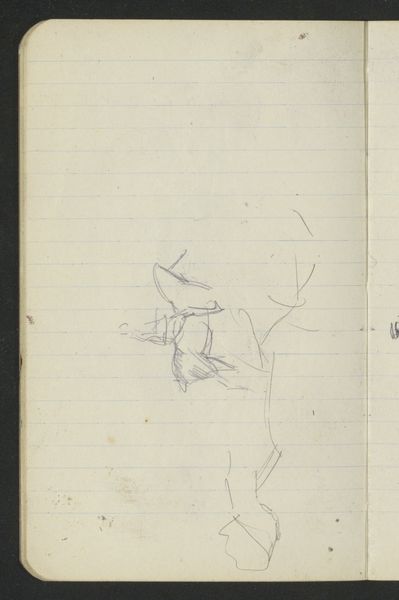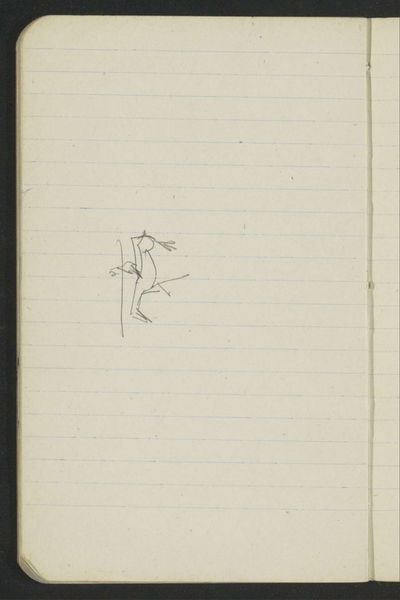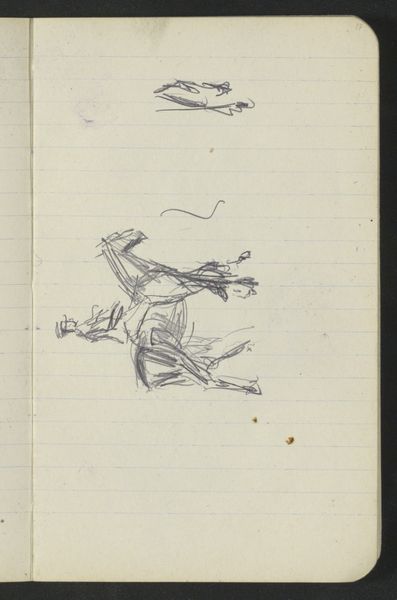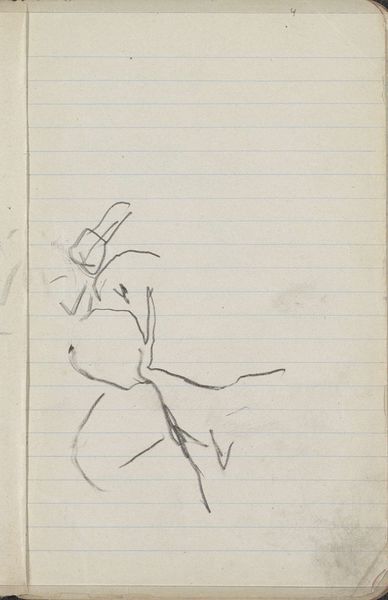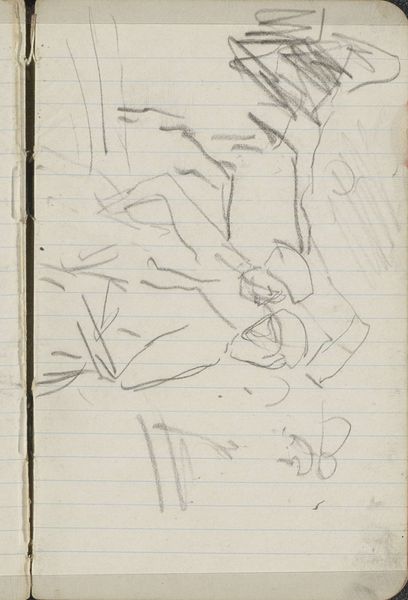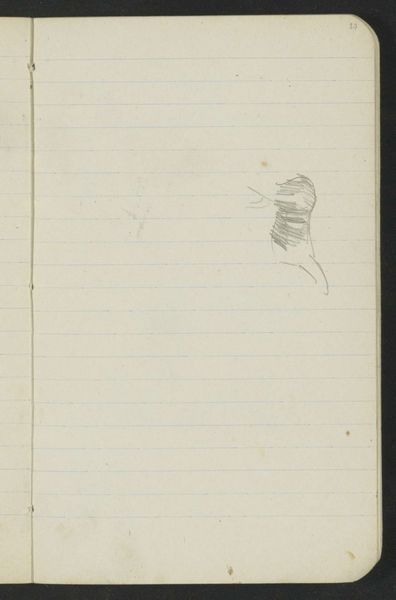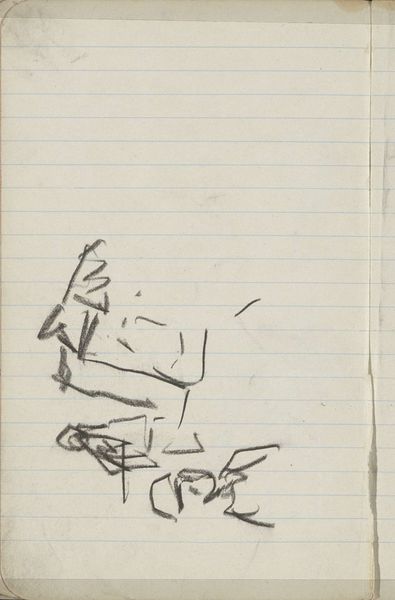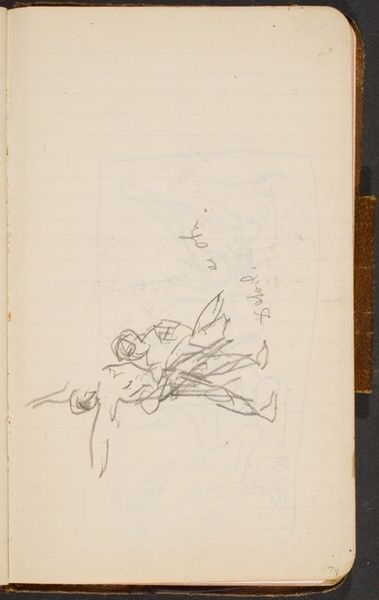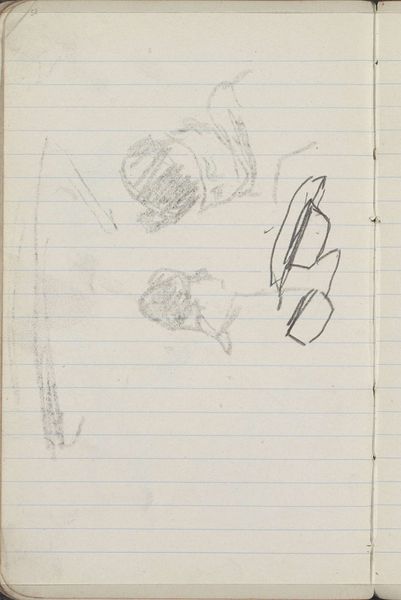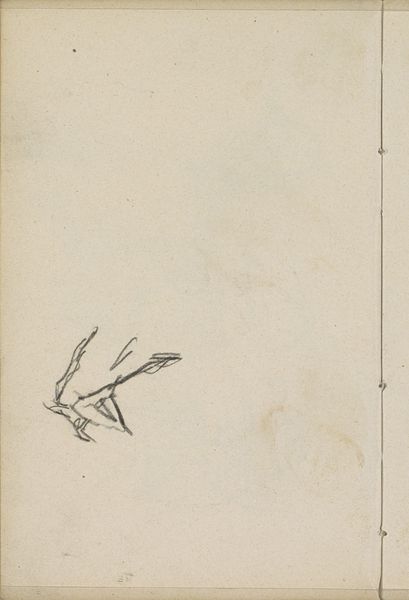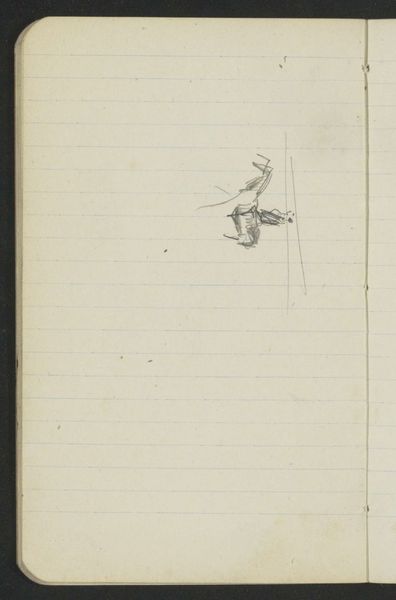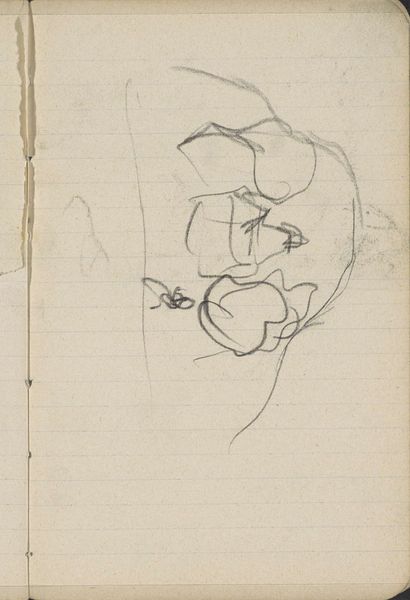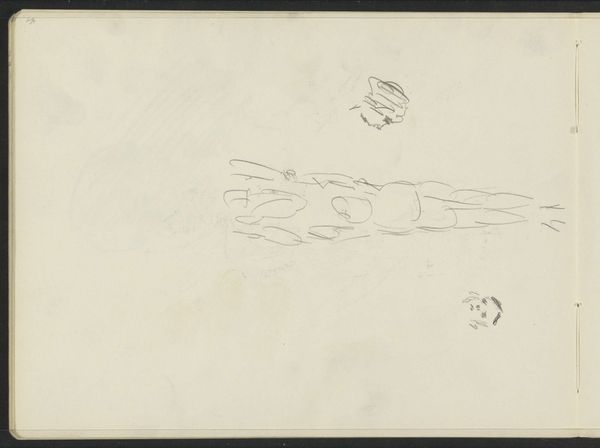
Copyright: Rijks Museum: Open Domain
Curator: Before us is “Two Riders,” a pencil drawing by Isaac Israels, believed to have been created sometime between 1875 and 1934. It resides here at the Rijksmuseum. Editor: It’s so sparse, almost spectral. The minimal strokes make the figures appear less like solid forms and more like fleeting memories of movement. There is a nervous energy in the marks. Curator: Indeed. Israels, associated with the Dutch Impressionists, often depicted scenes of everyday life, and here we have a candid sketch capturing the essence of riders on horseback. Notice the strategic use of line. Does it remind you of anything specific in Dutch cultural history? Editor: It seems as if this was ripped out from some sketchbook, on cheap paper, thin pencil work. My attention goes straight to how quickly this had to be produced. There is an urgency in this that has nothing to do with horses and their symbolic power, I think. But a job. Curator: You raise an interesting point. Considering the broader context, these rapid sketches were a departure from the highly finished, staged portraits common at the time. He captured movement and informality. Editor: And the speed needed to catch up with it! Pencil allowed for that immediacy, the tool mirrors the way urban life was rapidly being consumed. Was Israels' status secure enough to risk offending more traditional patrons? Or perhaps he saw value in being associated with these quicker methods and tools. Curator: That tension you mention—between tradition and modernity—lies at the heart of Impressionism, does it not? Consider the visual vocabulary being forged here. The symbolic potential inherent in the subject, sure, but I find it difficult not to be pulled back to a story of technological change too, even though the technique feels age-old! Editor: Exactly. And while we’re analyzing the artist’s choices, let’s also think about our own consumption here. What does it mean to slow down to appreciate something quickly made and jotted, and what labor is now hidden in that final form that made it to the walls of the museum? Curator: It’s a testament to Israels' vision that he could translate the energetic chaos into a lasting impression on paper and of culture too. Editor: Precisely, from fleeting marks of labour to solid memories in a cultural storehouse.
Comments
No comments
Be the first to comment and join the conversation on the ultimate creative platform.
